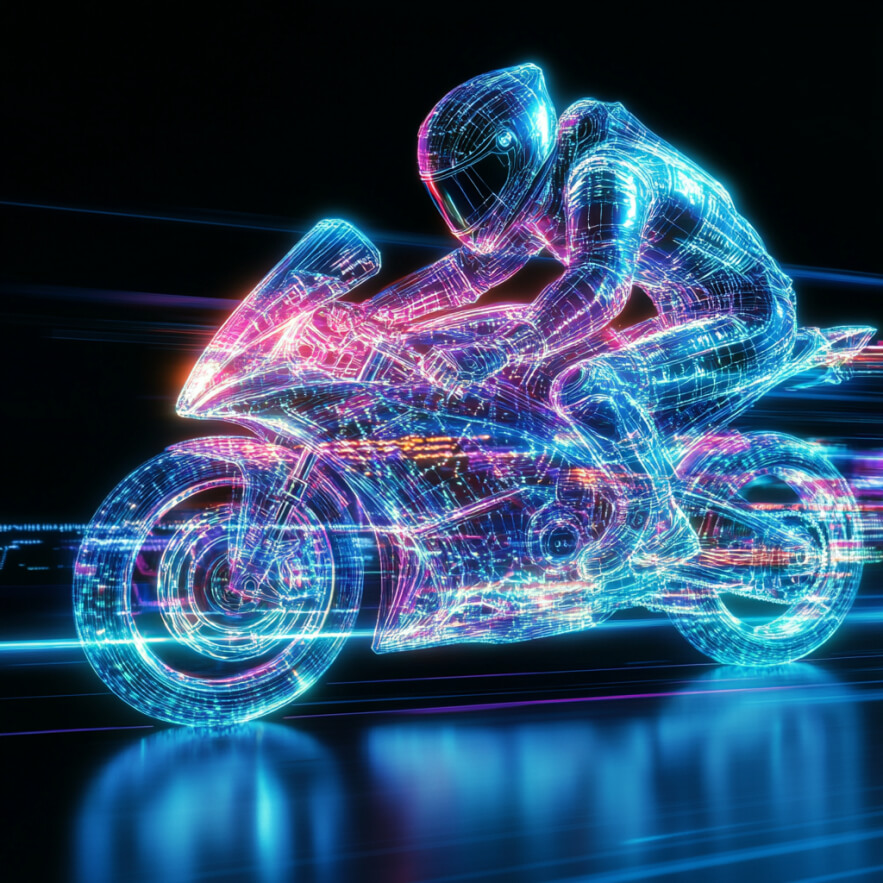Motorsports have always been a laboratory of engineering solutions, but in recent years, they have reached a new level thanks to digital technologies. The development of Artificial Intelligence (AI), the Internet of Things (IoT), and Blockchain is gradually transforming not only racer training but also the business model of competitions.
Modern racing is unimaginable without data analysis, predictive algorithms, and automated security systems. These technologies enable engineers and racers to make more precise decisions that directly affect race outcomes.
Digital technologies cover all aspects of motorsports, from athlete training and team management to fan engagement and event monetization. Let’s explore the key innovations shaping the future of this industry.
Smart systems: how sensors and artificial intelligence are changing motorcycles
Today, motorcycles are not just mechanical machines but complex computerized systems. They are equipped with numerous sensors that track parameters such as lean angle, tire wear, engine temperature, and even the rider’s physiological state.
In MotoGP, biometric sensors are used to monitor the rider’s fatigue and concentration levels. This data helps adjust race strategies and prevent potential errors caused by exhaustion.
Artificial intelligence analyzes collected data and helps teams predict motorcycle behavior. It evaluates movement trajectories, calculates optimal braking points, and suggests where a racer can gain time.
Thanks to these technologies, riders can adapt faster to changing track conditions and improve their performance.
Big data and analytics: digital assistants for racers and teams
Every race generates gigabytes of information, processed in real-time. Big data analysis allows teams to optimize race strategy, calculate component lifespan, and predict potential technical failures.
For example, analytical systems consider not only the current state of the bike but also historical data on the track, weather, and competitors’ behavior. This helps in decision-making regarding pit stops, tire choices, and suspension adjustments.
Key parameters analyzed during a race:
- Component wear and engine lifespan, allowing for technical issue prediction and preemptive replacements.
- Rider’s physical condition, including heart rate, stress levels, and response to pressure.
- Track dynamics and weather conditions, which affect road grip, braking, and acceleration.
- Movement trajectories and cornering speeds, compared with the best riders to optimize racing technique.
The more precise the analysis, the greater the possibilities for developing an individual race strategy and improving overall rider efficiency.
Virtual technologies: from simulators to augmented reality
Rider training is no longer confined to real tracks. Virtual simulators provide an opportunity to practice in conditions as close to reality as possible, without the risk of crashes and injuries.
For example, MotoGP and World Superbike use photorealistic training systems that simulate not only the track but also factors such as weather conditions, tire grip on asphalt, and even wind gusts. This helps riders study new routes and refine their riding techniques.
Augmented reality (AR) is already being tested in racing helmets, allowing riders to receive visual cues during a race. In the future, AR could display optimal movement trajectories, warn about potential hazards on the track, and even provide real-time tactical recommendations.
The combination of virtual and augmented reality is gradually becoming a standard in athlete preparation, and in the future, these technologies could extend beyond professional sports to help everyday motorcyclists ride more safely and efficiently.
Digital technologies such as artificial intelligence, big data analysis, and motorcycle sensors allow riders to analyze their mistakes, optimize movement trajectories, and receive personalized recommendations to enhance their riding style.
Motorsports actively utilize telemetry, biometric sensors, virtual simulators, augmented reality (AR), artificial intelligence, and predictive analytics, helping teams and riders adapt to race conditions and improve safety
Yes, AR technologies are already being tested in racing helmets and could become a standard, allowing riders to receive real-time guidance on movement trajectories, motorcycle condition, and track situations during a race.

